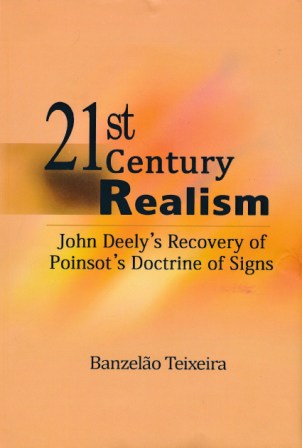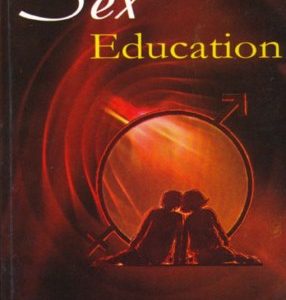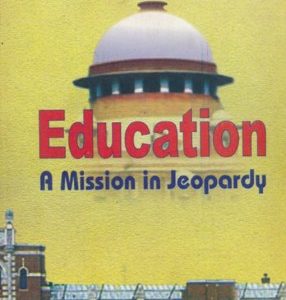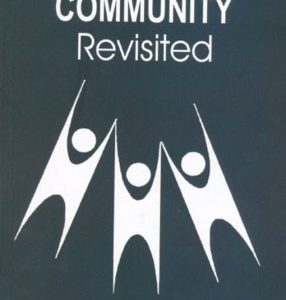Description
21st Century Realism
In the seventeenth century, at the beginning of the Modern Age, Western philosophical thought was at a crossroad fraught with enormous implications. Descartes, with his methodic doubt, inaugurated the Way of Ideas, which with Rationalism, Empiricism, Phenomenalism, and Idealism led inevitably to Postmodernism and to the wasteland of today’s Nihilism. Contemporaneously, in the Iberian Peninsula, another thinker, John Poinsot, brought together the rich tradition of Ancient and Medieval thought in an original synthesis, from which emerged a new Realism, the Doctrine of Signs. It was a road not taken, but thanks to John Deely, who discovered it anew, it has come forth as the Realism for the 21st century. This fascinating story, and the promise it holds, has been told bv Banzelao Teixeira in this engaging study, most rewarding to read.
Joaquim D’souza, SDB Chair of Ancient & Medieval Philosophy Divyadaan: Salesian Institute of Philosophy, Nashik
Banzelao Teixeira is a Salesian of Don Bosco belonging to the Panjim province (INP). He obtained his master’s degree in philosophy from Divyadaan: Salesian Institute of Philosophy, Nashik. In 2016, he completed his doctorate in philosophy from the Salesian Pontifical University, Rome. Presently he teaches at Divyadaan where he holds the chair of Philosophy of Communication. He is also the co-editor of Divyadaan: Journal of Philosophy and Education.
FOREWORD
INTRODUCTION
t. The Relevance of the Research
2. Methodology
3. Outline of the Book
4. Acknowledgments.
CHAPTER ONE – THE SIGN IN THE MEDIEVAL WORLD: From Augustine to the Conimbricenses
1.1. Augustine’s Contribution to the Notion of Sign
1.1.1. The Sign Prior to Augustine
1.1.2. The Notion of Sign in Augustine’s Works
1.1.3. The Scope of the Sign.
1.1.4. Critique of Augustine’s Formulation
1.2. The Period Between Augustine and Aquinas
1.2.1. The Problem of Universals
1.2.2. Peter Abelard and Nominalism.
1.3. Thomas Aquinas.
1.3.1. The Structure of Human Knowing
A) Sensation: Sensory Powers and Sensible Species
B) Perception: The Role of Phantasms in Cognition
C) Understanding: Intellect and Intelligible Species
1.3.2. The Problem of the Sign in Aquinas
A) Aquinas on the Sign: The First Impression
B) The Actual Complexity of the Sign in Aquinas
C) Resolving the Problem of the Sign in Aquinas
1.3.3. Concluding Remarks
1.4. Developments After Aquinas
1.4.1. Roger Bacon: Semiotic Turn in Medieval Thought
1.4.2. Duns Scotus: Dynamism of the Sign.
1.4.3. William of Ockham and Nominalism
1.4.4. New Terminology: Formal and Instrumental Signs
1.5. The Fate of the Sign in the Iberian World
1.5.1. Domingo de Soto: ‘Sign’ in the Iberian World
1.5.2. Pedro da Fonseca: Anticipating Modernity
1.5.3. Conimbricenses: The Controversies
1.6. Concluding Summary: The Sign Prior to Poinsot
CHAPTER TWO – POINSOT’S DOCTRINE OF SIGNS: A Textual Study of Tractatus de Signis
2.1. Poinsot and Tractatus de Signis
2.1.1. Poinsot’s Intellectual Career
2.1.2. The Rationale of Tractatus de Signis
2.1.3. General Outline of the Tractatus
2.2. The Notion of Ens rationis (Being of Reason)
2.2.1. Examining the Notion of Ens rationis
2.2.2. Types of Beings of Reason (Entia rationis)
2.2.3. Second Intentions and Logical Rational Relations
2.2.4. How do Beings of Reason Come About?
2.3. Notion of Relation.
2.3.1. Situating the Latin Discussion on Relation
2.3.2. Categorial Relation
2.3.3. Types of Categorial Relations
2.4. Notion of Sign
2.4.1. The Definition of Sign
2.4.2. Representation and Substitutive Character of the Sign
2.4.3. The Triadic Structure of a Sign-Relation
2.4.4. The Formal Rationale of the Sign
2.5. Division of Signs
2.5.1. Definition of Terms
2.5.2. Formal Signs and Instrumental Signs
2.5.3. Concepts and Phantasms as Formal Signs
2.5.4. Natural and Conventional Signs
2.5.5. Customary Signs
2.6. Concepts and Cognition.
2.6.1. Awareness: Intuitive and Abstractive
2.6.2. Difference between Intuitive and Abstractive Awareness
2.6.3. Direct and Reflexive Concepts
2.6.4. Ultimate and Non-Ultimate Concepts
2.6.5. Vocal Expressions, Concepts and Things
2.7. Concluding Remarks
CHAPTER THREE – THE IMPASSE CREATED BY MODERNITY: Deely’s Critique of the Modern Way of Ideas
3.1. The Modern Uprising
3.2. Rene Descartes and the Rise of Rationalism.
3.2.1. Descartes’ Methodological Doubt
3.2.2. Cogito ergo sum.
3.2.3. The Proof of God’s Existence.
3.2.4. The Existence of the World
3.2.5. Concluding Remarks
3.3. Locke’s Contribution to the Modern Debate
3.3.1. Locke on Innate Ideas and Perception.
3.3.2. Primary and Secondary Qualities
3.3.3. Locke’s Proposal Subversive of the Way of Ideas
3.3.4. Assessing Locke’s Novel Proposal
3.4. Berkeley and Hume
3.4.1. Berkeley’s Subjective Idealism
3.4.2. Hume’s Empiricism and Skepticism
3.5. Kant’s Consolidation of Modern Philosophy
3.5.1. A Second Copernican Revolution
3.5.2. Critique of Rationalism and Empiricism
3.5.3. Critical Philosophy: Kantian theory of the a priori
3.5.4. The Existence of External Reality
3.5.5. Assessing Kant’s Contribution
3.6. Poinsot vis-a-vis Modern Philosophy
3.6.1. Poinsot and Descartes on the Sign
3.6.2. The Latins and Locke on Sensible Qualities
3.6.3. Poinsot and Kant on Relation
3.7. Conclusion: The Logical Consequences of Modernity
CHAPTER FOUR – CONFRONTING MODERNITY: Postmodern Recovery of the Way of Signs
4.1. Ideoscopy and Cenoscopy
4.2. A Recovery of the Way of Signs
4.2.1. The Confusion Between Subjectivity and Objectivity
4.2.2. The Distinction Between Things and Objects
4.2.3. The Notion of Cathexis
4.3. Umwelt As the Objective World
4.3.1. Umwelt: The Species-Specific Objective World
4.3.2. Lebenswelt Human-Specific Objective World
4.4. The Uniqueness of Sign-Relations
4.4.1. The Uniqueness of Relation in Aristotle’s Categories
4.4.2. The Latin Advancement on ‘Relation’.
4.4.3. Deely’s Classification of Relations
4.4.4. The Ontological Nature of Relation.
4.4.5. The Uniqueness of Sign-Relations
4.5. Cognition From a Semiotic Point of View
4.5.1. The Role of Sign-Relations Within Objectivity
4.5.2. Objectivity and Modern Difficulties
4.5.3. Sensation Prescissively Considered
4.5.4. Perception and the Need for Mental Imagery
4.6. The Distinct Character of Human Understanding
4.6.1. Understanding Depends on Perceptual Semiosis
4.6.2. The Uniqueness of Anthroposemiosis
4.6.3. The Role of Relations in Human Knowing
4.6.4. The Relation of Self-Referentiality or Self-Identity
4.6.5. The Overlapping of the Subjective and Objective Realms
4.7. Conclusion: A Preliminary Response to the Modern Impasse
CHAPTER FIVE – TOWARDS A NEW REALISM: The Semiotic Animal’s Propensity for Truth and Responsibility
5.1. The Human Person as a Semiotic Animal
5.2. An Overview of Relations and Sign-Relations
5.2.1. The Suprasubjective Character of Relations
5.2.2. The Singularity of Relations
5.2.3. The Triadic Character of Sign-Relations
5.2.4. The Imperceptible Nature of Relations
5.2.5. The Particularity of Objective Relations
5.2.6. The Dynamic Nature of Sign-Relations
5.2.7. The Ontological Nature of Relations
5.2.8. Entia rationis as Exclusively Relations
5.3. The Limitations of the Quo-Quod Distinction
5.3.1. The Quo-Quod Distinction
5.3.2. The Complex Nature of the Specifying Forms
5.3.3. Exposing the Quo-Quod Fallacy
5.4. A New Realism Based on the Action of Signs
5.4.1. The Question of Truth
5.4.2. Overcoming the Modern Impasse
5.5. The Role of Signs in Discourse
5.5.1. Introductory Note
5.5.2. Discourse as Related to Things Existing in Reality
5.5.3. Discourse of Non-Existing Thing
5.5.4. The Public Character of Discourse
5.6. Semioethics
5.6.1. The Darker Side of Globalization
5.6.2. The Sense of Relatedness and Semioethics
5.6.3. Semioethics and Responsibility for the Other
5.6.4. The Responsibility to Care for Gaia
5.7. Concluding Remarks
CHAPTER SIX – CRITICAL APPRAISAL: Strengths and Questionable Aspects of Poinsot’s Doctrine and Deely’s Proposal
6.1. Poinsot and Tractatus de Signis
6.1.1. The Reception of the Tractatus
6.1.2. The Singularity of Relations
6.1.3. The World of Signs
6.2. The Difficulties with Tractatus de Signis
6.2.1. Difficulties with Language
6.2.2. The ‘Veiled’ References to Other Authors
6.3. Poinsot’s Contribution to the Doctrine of Signs
6.3.1. Poinsot: A True Disciple of Aquinas
6.3.2. Assessing Scotus’ Influence On Poinsot
A) The Divide Between Thomism and Scotism
B) The Compatibility Between Poinsot and Scotus
6.3.3. Poinsot and Soto
A) Dispute Regarding the Radicality of Poinsot’s Treatise
B) Rooting the Doctrine of Signs in the Theory of Relations
6.3.4. Poinsot and Suarez
A) Differences regarding Cognition
B) On Beings of Reason
6.3.5. Poinsot and the Coimbra Masters
A) The Concept as Instrumental Sign or “Instrument”
B) On Sign and Sign-Relations
6.3.6. Poinsot’s Anticipated Critique of Modernity
6.4. Deely’s Contribution to the Tractatus Edition
6.4.1. The Merits of Deely’s 1985 Edition
6.4.2. Critical, Historical or Doctrinal?
6.4.3. Difficulties with Translation
6.4.4. A Critique of Deely’s Editorial Style
6.5. Deely’s Innovative Approach to Semiotics
6.5.1. Contribution to Contemporary Semiotics
6.5.2. A Re-Orientation of’Subject’ and ‘Object’
6.5.3. Umwelt
6.5.4. Semiotic Animal
6.6. Further Development and Clarification
6.6.1. Poinsot’s Doctrine of Signs and Peirce’s Semiotics
6.6.2. Difficulties with “Ontological Relation”
6.6.3. Being as First Known
6.7. Conclusion: Towards a ‘Postmodern’ Way of
Signs
GENERAL CONCLUSION
1. The Significance of the Concept as a Formal Sign
2. A Recovery of the Thomistic Notion of Intentionality
3. Towards a New Realism for the 21st Century
BIBLIOGRAPHY
INDEX




Reviews
There are no reviews yet.